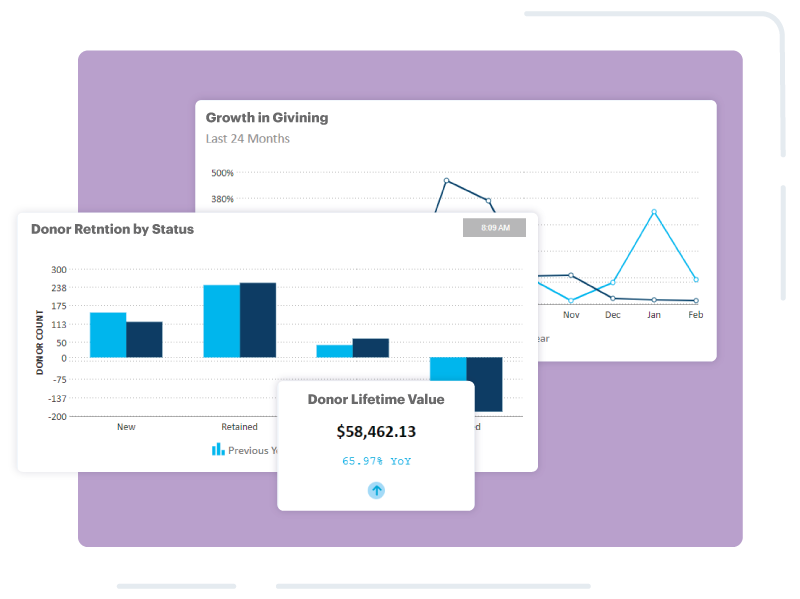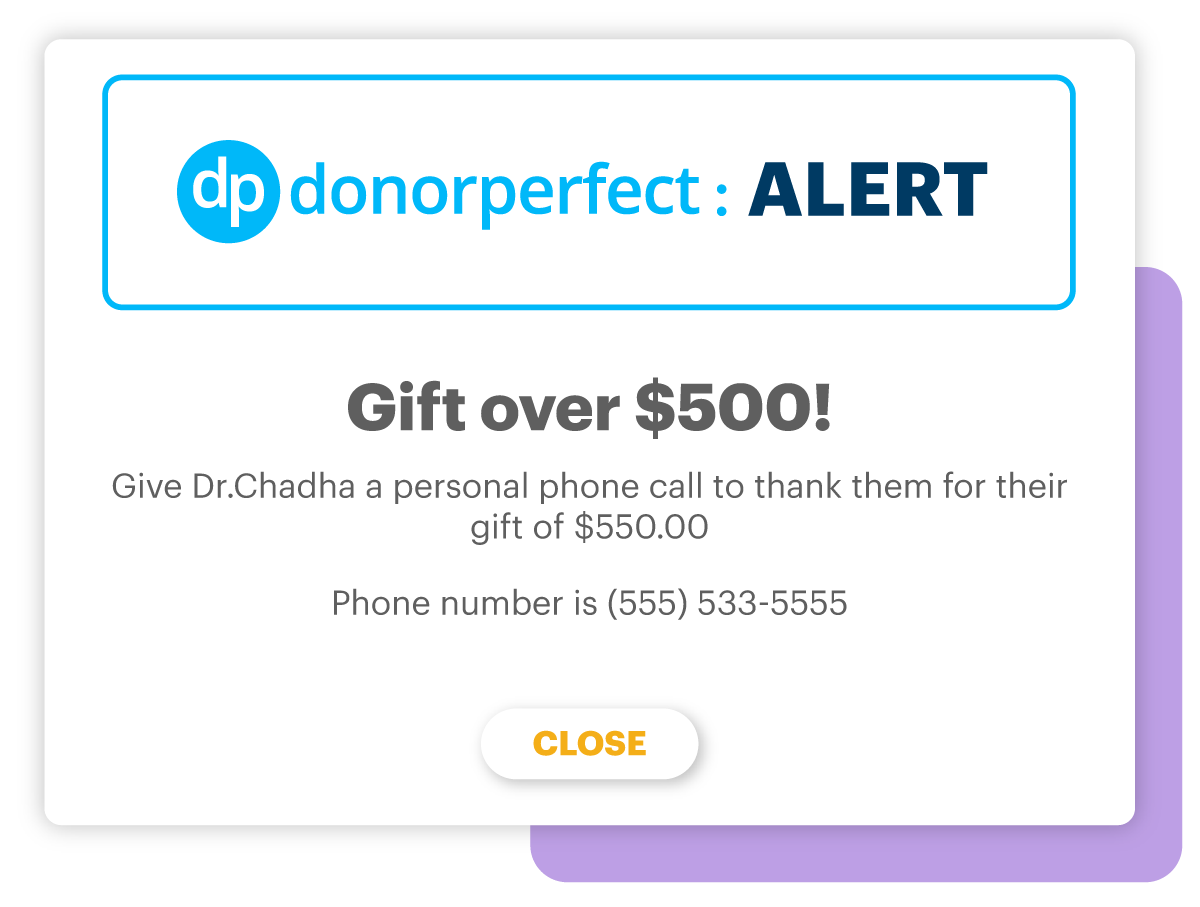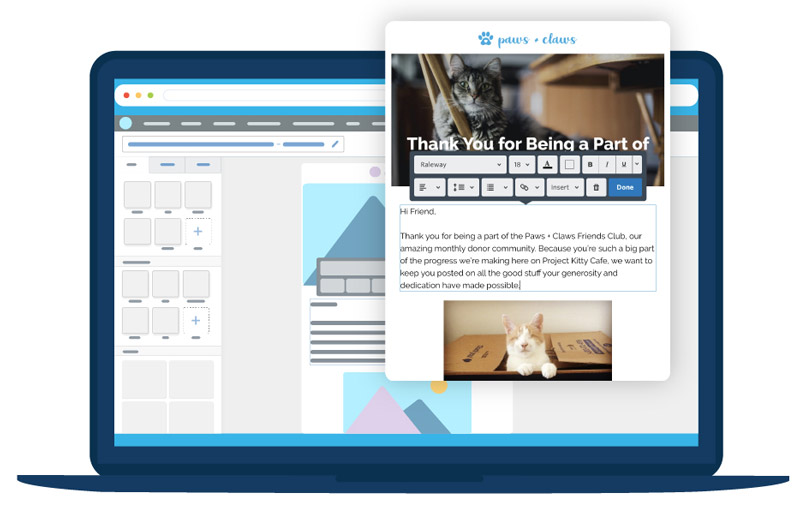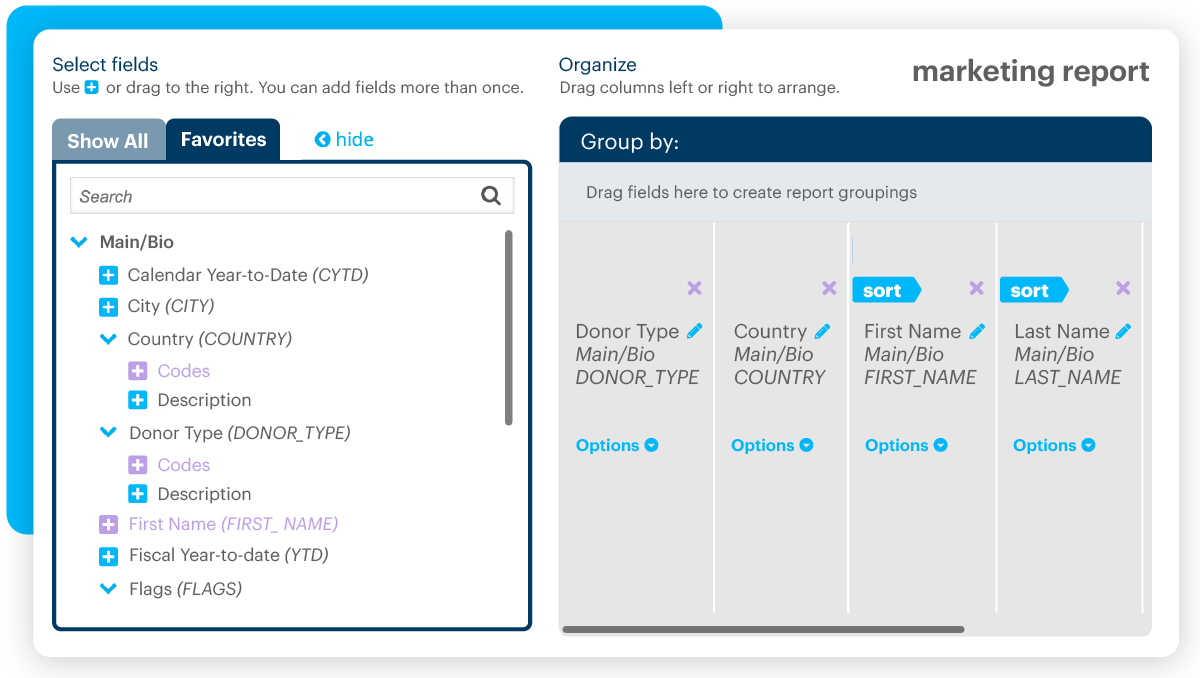Nonprofit Technology & Fundraising Blog
Subscribe to our mailing list

June 26, 2025 | Donor Engagement, Fundraising Operations, Planning
A nonprofit strategic plan is your team’s roadmap to mission fulfillment. But too often, strategic plans are created, approved, and then shelved, left untouched as priorities shift and opportunities emerge. To stay relevant, your nonprofit’s strategic plan must evolve with your organization and the changing environment around it.
In this post, we’ll walk through how to create and execute a nonprofit strategic plan that becomes part of your day-to-day operations, fuels accountability, and drives measurable outcomes.
Revisiting, updating, and executing your nonprofit’s strategic plan throughout the year ensures your team, programs, and supporters are all moving in the same direction to support your mission.
These steps are especially important when staff changes occur, economic conditions are uncertain, or donor behavior shifts.
For instance, consider these trends and circumstances that might impact your organization:
These shifts can affect your operations and shape your fundraising capacity, donor expectations, and revenue sustainability.
From revenue diversification to communications and staffing, strategic planning gives you a way to prioritize what matters most, track progress, and align your efforts across teams and timelines.
Before you can execute ideas, you need a plan that’s structured, clear, usable, and visionary. A strong nonprofit strategic plan serves as a resource your entire team can follow, from the boardroom to the front lines of services, programs, and fundraising. A strategic plan aligns your mission with daily decisions and long-term goals.
Keep your team aligned on strategic goals and outcomes. DonorPerfect’s dashboards help nonprofits visualize progress in real time, making it easier to track milestones and keep priorities top of mind.

Pro tip: Keep the planning team small but cross-functional, meaning it includes representatives from different departments (like development, programs, marketing and communications, and finance). A compact and diverse group improves focus by incorporating key perspectives.
Now that your strategic plan is finalized, it’s time to operationalize it. This means making sure your team is aligned, your tools are ready, and your priorities are actionable.
Before diving in, take one last look at your internal capacity:
Pro tip: Avoid duplicating or overlapping tasks by ensuring clarity and readiness across teams, saving time and building momentum from the start.
Effective execution starts with a foundation of support. Revisit the readiness topics addressed in Blog #2: How to Prepare and Lead Your Nonprofit Strategic Planning Process with your finalized plan in mind:
You may need to reallocate resources from lower-impact activities to prioritize strategic goals.
Pro tip: Avoid duplicating or overlapping tasks by ensuring clarity and readiness across teams, saving time and building momentum from the start.
DonorPerfect gives you a clear view of donor trends, campaign results, and giving patterns, so you can align fundraising priorities with real-time data and make more informed planning

Vague goals lead to vague results. That’s why every nonprofit strategic plan should include clear goals (broad outcomes your organization is working toward) and SMART objectives—the specific, measurable targets that define what success looks like.
A strong strategic goal sets the direction, and the SMART objectives bring that direction to life by turning vision into action.
SMART objectives are:
Sometimes the difference between goals and objectives can be confusing. Here are some examples:
Achievability doesn’t mean aiming low; it means setting goals your team can build confidence around, adjust as needed, and continue progressing. Pair high-impact goals with phased milestones to maintain morale and momentum.
Pro tip: When you do aim high, check your capacity. Before finalizing each goal, ask: Do we have the time, people, and funding to make this happen in the next 6–12 months? Adjust timelines or break goals into phases to maintain strong momentum.
Monitor what matters. Whether you’re scaling major gifts or optimizing recurring revenue, DonorPerfect’s performance dashboards and retention reports help mid-sized and growing nonprofits stay laser-focused on donor trends that drive strategic success. These are helpful tools to help with strategic alignment.

Once your SMART goals are in place, the next step is identifying performance metrics that will tell you whether you’re on track.
Measurable objectives support your strategic plan, but without tracking mechanisms, even SMART goals can lose traction. Defining performance metrics provides your team with visibility into progress and helps you make adjustments before issues arise.
Start by identifying metrics that align with your strategic goals.
These might include:
Be sure key metrics are easy to track, tied to a specific goal, and owned by a person or team.
Pro tip: Limit your metrics to the few that matter most; choose metrics that reflect mission progress, not just activity volume. Too many metrics can dilute focus and overwhelm your team. Track trends with totals; year-over-year comparison helps contextualize what progress really looks like.
Below are two fictional examples of how nonprofits can apply strategic planning in practice—aligning goals with measurable objectives, adjusting course based on data, and tracking results to support long-term success.
Example 1 – A mid-sized environmental nonprofit developed a 3-year strategic plan to deepen community engagement and grow sustainable revenue. One key objective was to increase monthly donor enrollment by 25% within 12 months. To support this, they assigned strategic leads for each initiative and implemented monthly metric reviews as part of their operational cadence. When donor behavior data revealed a misalignment between campaign timing and donor responsiveness, the team adjusted their appeal calendar and personalized messaging to emphasize long-term impact. These shifts, guided by real-time dashboards, led to a 27% increase in monthly giving within the first year and informed new planning practices for future campaigns.
Example 2 – A youth development nonprofit set a strategic goal to increase donor engagement during year-end campaigns. As part of their execution framework, they used quarterly reviews and performance dashboards to track progress against campaign benchmarks. Midway through their appeal, donor engagement lagged behind targets, prompting a team review. They adjusted their segmentation strategy and launched a donor story series aligned with their messaging objectives. These responsive updates helped them exceed their annual giving goal by 12% and laid the groundwork for a repeatable model in future campaigns.
Once you define your objectives, assign clear roles:
Ownership turns new ideas into impactful action. When team members know what they’re responsible for—and how success will be measured (e.g., metrics, meeting check-ins, or data dashboards)—they’re more likely to deliver.
DonorPerfect’s SmartActions help automate follow-up tasks, alerts, and donor-related actions—so nothing falls through the cracks during fundraising execution. Whether you’re managing campaigns or nurturing key relationships, SmartActions keep your team responsive and focused on what matters most, while aligning tasks and engagement to strategic planning tactics.

A strategic plan guides what your organization does, and it helps shape how you talk about your work, both internally and externally. A strong communication strategy ensures your staff, board, and stakeholders are aligned and engaged at every step of your nonprofit strategic planning process.
Consider developing a simple communication plan that includes:
Keep messaging consistent, transparent, and tied to your mission.
Pro tip: Use consistent messaging across internal and external channels to reinforce strategic progress. Tailor updates for each audience. Highlight team contributions in staff communications and connect donor impact to specific initiatives in supporter outreach. Also, align your board briefings with the same milestones shared publicly to present a unified, mission-driven narrative.
Use DonorPerfect’s built-in email and reporting tools from Constant Contact to create automated updates that share wins with donors and keep your team informed throughout your plan’s execution.

The best strategic plans don’t live in a binder—they live in team conversations, staff meetings, and annual reviews. Earlier, we discussed translating strategy into daily operations. Here’s how to make that stick across your team’s day-to-day rhythm.
Here’s how to integrate your plan:
Keep messaging consistent, transparent, and tied to your mission.
Use DonorPerfect’s scheduled reports to keep board members updated between monthly or quarterly meetings. Automated updates ensure leadership stays informed on progress, challenges, and outcomes without extra manual work.

Strategic plans often introduce new directions, which can mean evolving workflows, rethinking priorities, or refining how teams collaborate. These shifts can feel challenging, but with the right approach, they activate mission-driven growth, clarify fundraising priorities, and strengthen team alignment.
Successful change management includes:
Involve your team early, communicate often, and celebrate wins along the way to maintain momentum and trust. Remember, you don’t have to do everything all at once. Start where you are, and expand your efforts as your capacity grows.
Pro tip: Change can be hard, but clarity makes it easier. Frame change as progress, not disruption, and anchor it in your mission. Help staff see how their role supports the bigger picture.
Your strategic plan should be flexible, not fixed. As circumstances change, revisit your goals:
A quarterly review process helps your team adapt while staying grounded in your strategic priorities.
Pro tip: Document all changes to your nonprofit’s strategic plan and the reasons behind them. This creates transparency and learning opportunities.
Strategic plans are most effective when they account for both the known and the unknown. While no plan can predict the future, you can identify common risks and build flexible responses into your strategy.
Start by mapping potential internal and external risks, such as:
Build a contingency mindset into your execution process. That might mean setting aside reserve funds, creating backup workflows, or identifying “must-haves” vs. “nice-to-haves” within your plan.
Pro tip: Consider using a risk assessment to evaluate potential challenges, categorizing them by their likelihood and potential impact to prioritize mitigation strategies.
With SMART objectives, clear accountability, and effective tracking tools, your nonprofit strategic plan becomes an actionable guide. By integrating these elements into daily workflows and remaining adaptable, your team moves beyond planning to achieve meaningful, measurable progress.
Whether you’re building your first strategic plan or refining an existing one, having the right tools and systems in place makes execution smoother, faster, and more effective.
DonorPerfect empowers nonprofits to execute their strategic plans with fundraising tools that track, report, and facilitate collaboration. And when your fundraising strategy is aligned with your strategic plan, each donor interaction becomes a step toward mission success. That’s what we’ll explore next.
With the right systems in place, your nonprofit strategic plan can move from vision to execution, turning strategy into momentum and planning into results.Want to make your plan stick? See how DonorPerfect can help you turn strategy into sustained impact. Learn more about fundraising software today.
This post is Part 3 of our Strategic Planning for Nonprofits series.
Coming up: In the final blog post, Part 4, we’ll explore how to align your fundraising strategies with your nonprofit’s strategic plan, ensuring cohesive messaging, smarter campaigns that advance your mission, and deeper donor engagement.
1. How do we keep our strategic plan visible and relevant after launch?
2. What if we miss our strategic plan’s goals?
3. How should we handle internal pushback during strategic plan execution?
Follow us on social!